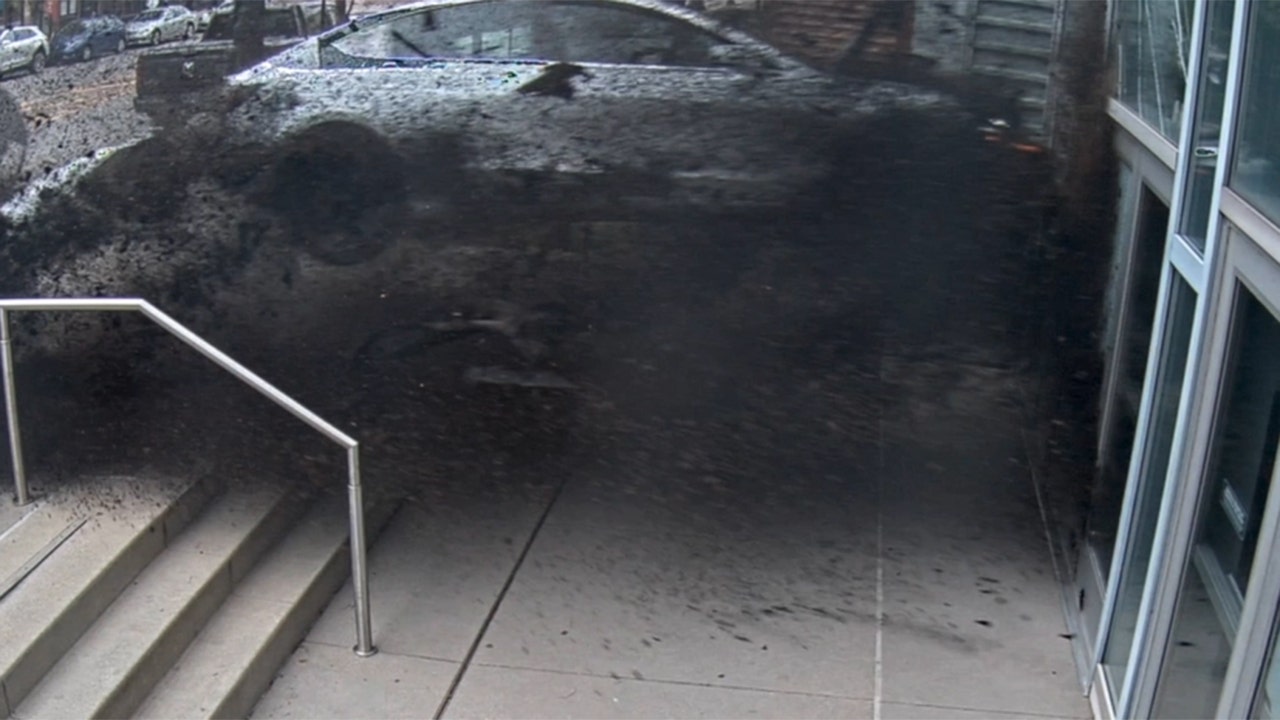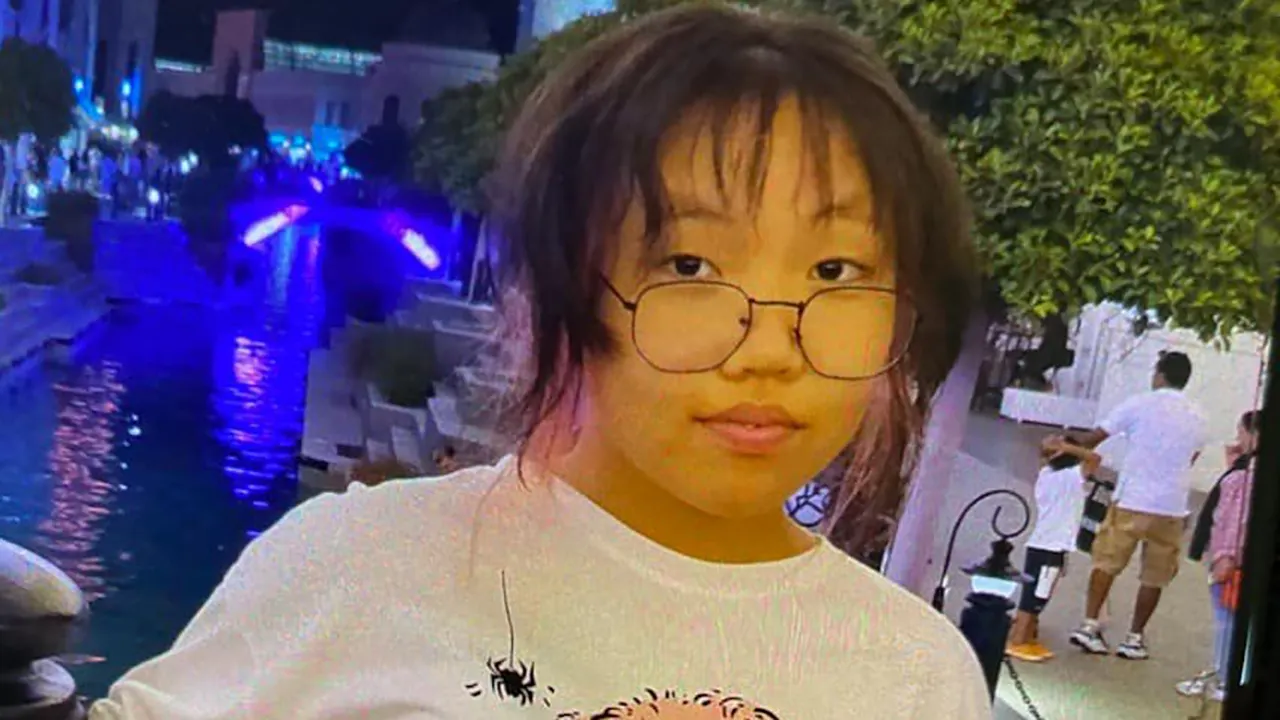Lifestyle
The magical California state park that doesn't allow visitors
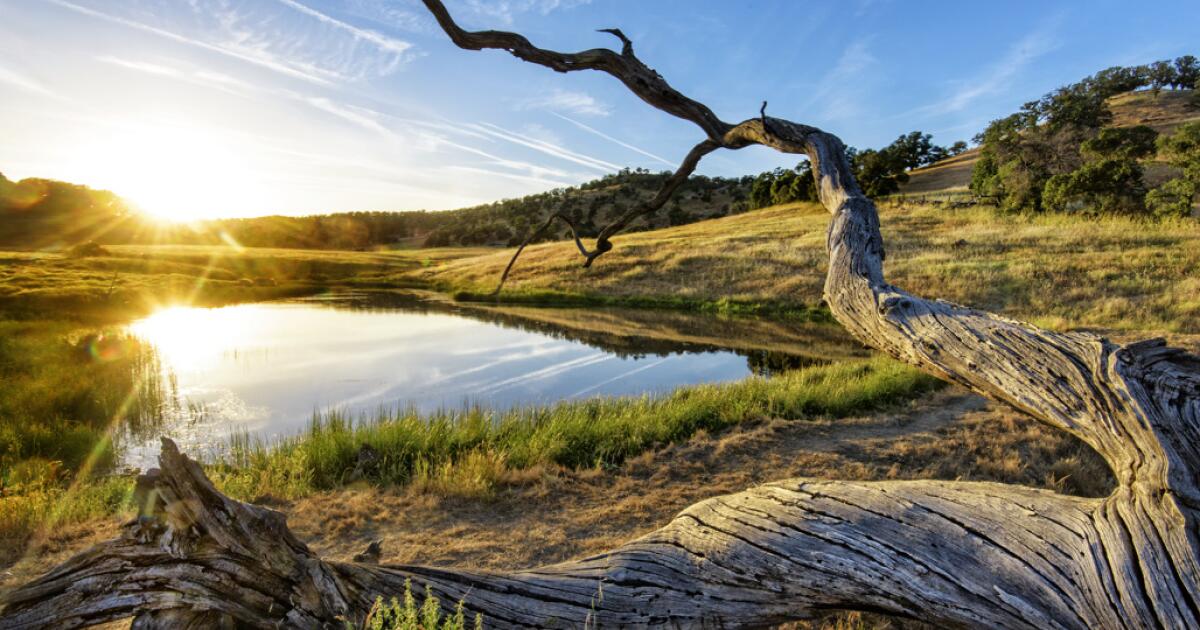
About 60 miles north of Sacramento, the Sutter Buttes rise starkly from the floor of the Central Valley, the remnants of a volcano active more than 1.4 million years ago. Their cathedral-like spires twist upward, some reaching more than 2,000 feet into the sky — an imposing circular formation, 10 miles in diameter, that’s been called “the smallest mountain range in the world.”
Sheltered within these lava domes is an oasis of rolling hills, rich with wildflowers and Native American artifacts, and watched over by hawks and countless other species of birds.
Bitter debates over the lack of public access to the Sutter Buttes have roiled for years. But most everyone on both sides agrees on this: They encompass some of the most magical and otherworldly terrain in California. Long sacred to Native American tribes, the formation is now home mainly to cattle that chomp grass behind stone walls built by Chinese laborers more than a century ago, oblivious to the fact that some people want to throw open the gates and some want to keep them locked forever.
For the last two decades, the Sutter Buttes have also been home to a California state park that almost no one is allowed to visit.
For the record:
7:30 a.m. May 20, 2024An earlier version of this article misspelled the last name of the famed landscape architect who helped establish the National Park Service as Frederick Law Olmstead Jr. His last name is spelled Olmsted.
In 2003, the state of California spent about $3 million to buy 1,800 acres on the north side of the buttes, including an idyllic stretch of emerald called “Peace Valley.” The government has eyed a park in this ruggedly beautiful landscape since the inception of the state parks system in the 1920s. Frederick Law Olmsted Jr., the famed landscape architect who helped establish the National Park Service and also surveyed potential parkland for California in those early years, put it on a state park wish list, along with such gems as Point Lobos on the Monterey County coast and Donner Lake in Northern California.
In 2005, the state finally achieved its goal — sort of. The State Park and Recreation Commission officially declared its 1,785 acres a park. The property has its own state-sponsored webpage and a budget for conservation and maintenance.
What it does not have is any way for the public to get in.
“Please note: There is currently no public access point to enter this park,” reads a notice in big red letters at the top of the webpage.
Beneath that are breathtaking photos: sunlight glinting off a placid lake; a dirt road leading up a verdant hill; a haunting photo of the buttes at sunset — from a distance.
That last image — the one from a distance — is the only way most people can view the park.
Most of the land in the Sutter Buttes is held by a handful of families, some with holdings dating to the 19th century, who use the fields to graze cattle and sheep.
(Brian Baer / California State Parks)
The issue, according to current and former parks officials, is that all the roads leading into the Sutter Buttes are privately owned. And none of the landowners — some of whom have had title to the land since before California entered the union — will give the state permission to use those roads for park visitors. Nor has the state found anyone willing to sell them property near a public road that could be used to access the park.
With the impasse in its 20th year, state officials instead allow a few people into the park on occasion for carefully guided visits.
State parks officials were not available for an interview to discuss the situation, but said in a statement that the department “continues to look for opportunities to either secure land or easements to provide access.” So far, nothing has come up.
Many locals say the current status — an empty state park — suits them just fine. The Sutter Buttes are a precious ecosystem, they say, filled with delicate tribal artifacts and threatened species. It isn’t the same, they argue, as a state park in the immense Sierra Nevada or vast inland deserts or along the glittering coast.
“This little blob in the middle of the Sacramento Valley is so sensitive to encroachment,” said Marty Steidlmayer, 59, whose family has owned land in the Sutter Buttes since the 1930s. A state park, he said, would “let people in, free and unattended,” which could lead to vandalism, fires and degradation. “It’s not a good idea,” he said.
Sutter County Supervisor Mat Conant agreed. “It is more important to protect those land rights,” he said, noting that “some families have held that land for close to 200 years.”
Francis Coats is one of the few local landowners who think the state needs to find a way to let in the public.
“It’s absolutely beyond me why it’s not open,” said Coats, whose family has been in the area since the 19th century. Coats said he owns a small interest in 160 acres on the north side of South Butte, and so strong is the antipathy toward access that he faced death threats when he first tried to visit his own parcel.

Debates over the lack of public access to the Sutter Buttes have roiled for years. But both sides agree the buttes encompass some of the most magical terrain in California.
(Brian Baer / California State Parks)
The Sutter Buttes, though little heralded in modern-day California, have played an outsize role in the state’s history.
The Maidu people took refuge there for thousands of years during periods when the Sacramento Valley flooded. They believed it was a resting point for spirits on their journey to the afterlife.
In the 1840s, Kit Carson and Gen. John C. Fremont, fresh from their savage massacres of Native Americans in the north state, hid out in the buttes and plotted to seize California from Mexico. Then they headed to Sonoma County to lend support to the Bear Flag Revolt of 1846. Their Republic of California was short-lived, but helped stoke the Mexican-American War, which paved the way for California to join the United States.
When state officials first proposed a park in the Sutter Buttes in the 1920s, local newspapers took the opportunity to celebrate this history.
“These rugged hills hold a prized place in the hearts of Californians,” the Sacramento Union wrote in 1931. “They are indelibly linked with the romance of the state’s secession from Mexican rule.”
The park didn’t come to fruition then, and the Depression and World War II created other priorities.
The state tried again in the 1970s, putting money in a parks bond to fund the purchase of tens of thousands of acres in the Sutter Buttes. Local landowners were horrified, and the county Board of Supervisors voted in opposition. “We’ll fight them, right down the line,” Supervisor J.A. Bagley told the local newspaper.
The state backed down. But within the parks department, some never dropped the dream.
The department’s chief of land acquisition, Warren Westrup, knew how to play a long game. Westrup, who worked for the state for 37 years, figured out how to put together parcels of land, piece by piece, until a vision came to fruition.
He did it in the Santa Monica Mountains, where state officials devised ways to purchase land for a trail that connects communities from Los Angeles to Malibu; and in Chino Hills, buying one canyon after another until eventually a whole park came to fruition.
In 2003, Westrup heard through an intermediary that someone with land in the buttes was looking to sell. He arranged for its purchase, even though he was aware the property was surrounded by private land blocked by private gates and accessible only via a private road.
Parks officials moved forward to establish the park with the notion that they eventually could persuade someone else to sell them land adjacent to a public road, where they could build a parking lot, bathrooms and maybe a few tents for people to camp.
The problem: No one would sell.

Government officials have pursued a park in the Sutter Buttes since the inception of the state parks system in the 1920s.
(Brian Baer / California State Parks)
Most of the land in the buttes is held by a small number of legacy families who primarily use the fields for grazing cattle and sheep. No one lives in the interior, although there are a few homes on the outside.
After the state pushed for a park in the 1970s, some landowners feared the government might take their property. To stave that off, they began providing guided tours that granted limited access to the public and also to researchers. Local schoolchildren were also invited in.
They hired a manager, who moved into a cabin for the job, along with his wife, their golden retriever and their cat. They fell in love with the quiet grandeur of the area — all except for the cat, who was snatched by an eagle and never seen again.
“Some places just attract us more powerfully than others,” Walt Anderson, the manager, explained in a 2006 oral history. “I mean, everybody loves the profile of the buttes when they pass it, but once they get inside, I mean, they’re hooked.”
Steidlmayer, who owns land adjacent to the state park, said officials have told him “that the state will buy anything that we would be willing to sell. But that is the last thing my family would ever do.”
Even some outdoor enthusiasts have reservations about opening the park.
Lisa Lindman, executive director of the Sutter Buttes Regional Land Trust, said she has come to view the issue as “really complicated.”
She wants the public to be able to appreciate the peace and beauty of the buttes, but echoed landowners’ concerns about the delicate ecosystem and centuries-old Native American artifacts that remain largely untouched.
In lieu of full public access, Middle Mountain Interpretive Hikes, a sister organization to Lindman’s land trust, leads private tours for small groups of people who pay about $35 apiece for a carefully supervised hike. Reservations can be hard to come by. The Middle Mountain hikes do not enter the state parkland. Instead, they traverse private land near the park under a long-standing agreement with landowners that grew out of those early tours from the 1970s.
On a recent spring day, a tour group wound up dirt roads and through locked gates in a small caravan of cars, before parking near the center of the range. Volcanic domes rose above a green meadow. Wind rustled through the grass. A flock of snow geese passed overhead, their silver wings gleaming against a blue sky.
From atop the lava domes, it was possible to see Mt. Lassen and Mt. Shasta. The snow-capped Sierra stood to the east. After a precarious scramble down, group members traversed the grassy base of the domes and came to the edge of the state park at Peace Valley. A guide warned the tour group they did not have permission to enter.
Ruth Coleman, who was head of the Department of Parks and Recreation when the site was designated a state park, said she hopes California will keep pushing to find a way to change that, while putting measures in place to preserve the land.
“It’s classified as a state park. And a state park has access,” Coleman said, adding: “I’ve been there. … It’s magic.”

Lifestyle
'Wait Wait' for July 27, 2024: With Not My Job guest Kathleen Hanna

Kathleen Hanna of The Julie Ruin performs onstage at the 2016 Panorama NYC Festival – Day 2 at Randall’s Island on July 23, 2016 in New York City. (Photo by Nicholas Hunt/Getty Images)
Nicholas Hunt/Getty Images/Getty Images North America
hide caption
toggle caption
Nicholas Hunt/Getty Images/Getty Images North America
This week’s show was recorded in Chicago with host Peter Sagal, judge and scorekeeper Bill Kurtis, Not My Job guest Kathleen Hanna and panelists Meredith Scardino, Peter Grosz, and Mo Rocca Click the audio link above to hear the whole show.
Who’s Bill This Time
Momala Takes Over; Assigned Seats Are Back; And The Heat Is On
The Olympic Torch Reporch
Our Summer Olympics Preview
Bluff The Listener
Our panelists tell three stories about someone committing an office faux pas, only one of which is true.
Not My Job: We quiz Bikini Kill’s Kathleen Hanna on Hanna-Barbera
Punk icon Kathleen Hanna plays our game called, “Kathleen Hanna Meet Hannah-Barbera.” Three questions about the animation studio.
Panel Questions
Hide Your Receipts; VR Meets ER; Avocado Apologies
Limericks
Bill Kurtis reads three news-related limericks: Situation Room Cocktails; Burrito Bird; Hopped Up Sharks
Lightning Fill In The Blank
All the news we couldn’t fit anywhere else
Predictions
Our panelists predict what will be the big story out of the Paris Olympic Games
Lifestyle
L.A. Affairs: At 77, I had a crush on my best friend’s widower. Did he feel the same way?
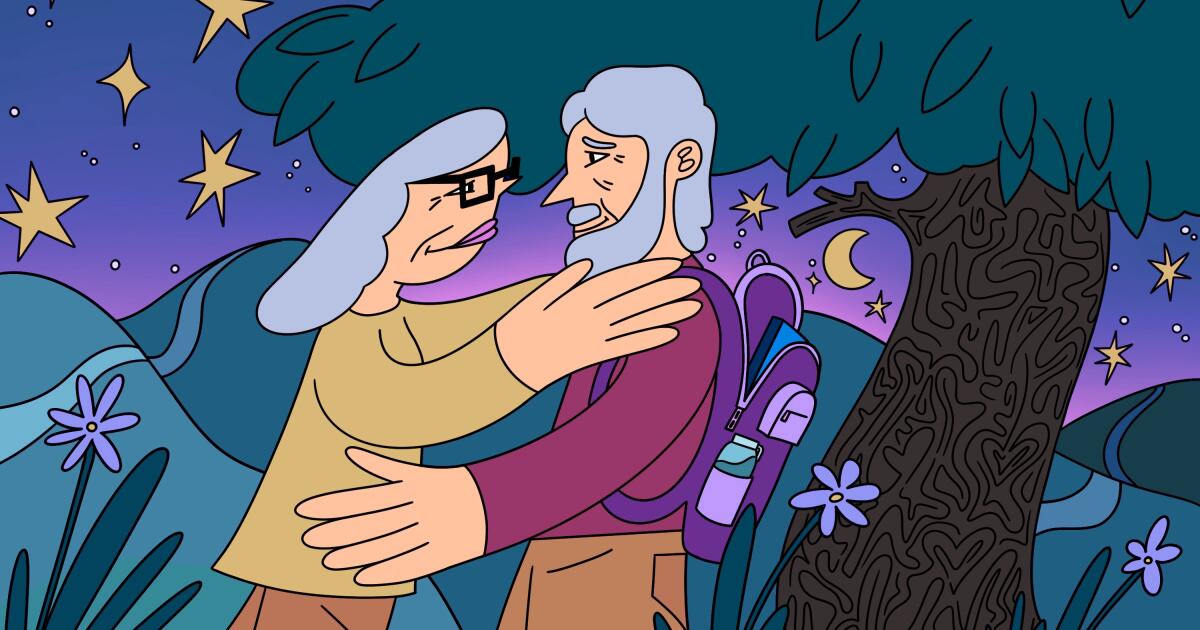
At 77, I had given up. After two failed marriages and years of unsuccessful dating, I accepted what seemed to be my fate: single for almost 40 years and single for however many remained. You don’t get it all, I told myself. I was grateful for family, friends and work. Life settled into what felt like order.
Until Ty.
As the husband of my best friend, he was no stranger, but he was usually peripheral. Then 10 years ago, my friend got lung cancer. I watched during visits, stunned at how nurturing Ty could be, taking care of her even though they had separated years before at her request.
After she died, Ty and I stayed in touch sporadically: a surprise sharing of his second granddaughter a year after we scattered my friend’s ashes, an invitation to the launch of my book a year later. Ty attended, hovering in the back, emerging after everyone left to attentively help load my car.
Two more years passed. During quiet moments, I remembered his sweetness. I also remembered his handsome face and long, tall body. Confused about what I wanted, I texted Ty, who’s an architect, under the guise of purchasing a tree for my backyard.
We spent an afternoon at the nursery, laughing, comparing options and agreeing on a final selection. When the tree arrived, I emailed a photo. He emailed a thank you.
Another three years passed, broken only by news of his third granddaughter and my memories of how good it felt to be with him. Alert to his attentiveness, but unsettled by both his remove and my growing interest, I risked reaching out again, this time about remodeling my garage.
Ty spent several hours at my house making measurements, checking the foundation and sharing pictures of his home in Topanga. His sketches for the garage arrived two weeks later via email.
I was grateful for his help but unsure over what sort of friendship we were developing, at least from his point of view. I, however, was clear. I wanted him to wrap his long arms around me, tell me sweet things and make me his.
Instead, I sent a gift card to a Topanga restaurant to thank him for his drawings.
“Maybe we should spend it together,” he texted.
We dined in the dusk of late summer. Our talk was easy. Discomfort lay in the unspoken. Anxious for clarity, I repeatedly let my hand linger near the candle flickering in the middle of our table. It remained untouched.
And that was as far as I was willing to go. I refused to be any more forward, having already compromised myself beyond my comfort level with what seemed, at least to me, embarrassingly transparent efforts to indicate my interest. Not making the first move was very important. If a man could not reach out, if he didn’t have the self-confidence to take the first step, he would not, I adamantly felt, be a good partner for me.
Two weeks later, Ty did email, suggesting an early evening hike in Tuna Canyon in Malibu. The setting was perfect. Sun sparkled off the ocean. A gentle breeze blew. We climbed uphill for sweeping coastal vistas and circled down to the shade of live oaks, touching only when he took my hand to steady me where the path was slippery. At the end of the trail, overlooking the juncture between the mountains and the sea, we stood opposite each other and talked animatedly for almost an hour, both of us reluctant to part.
Our conversation was engaging, but my inner dialogue was louder. When, I kept thinking, is this man going to suggest we continue the evening over dinner? We didn’t have to go out. We could eat at his house. It was 7 p.m., for God’s sake. Passing hikers even stopped to remark on our matching white hair and how well they thought we looked together. It was like a movie scene where the audience is yelling, “Kiss her, kiss her,” rooting for what they know is going to happen while the tension becomes almost unbearable. But bear it I did.
Each of us ate alone.
A few weeks later, at his suggestion, we were back at Tuna Canyon. This time Ty did invite me to end the evening at his house. Sitting close on his couch, but not too close, we drifted toward each other in the darkening room. His shoulder brushed mine reaching for his cup of coffee. My hip pressed his as I leaned in for my tea. Slowly, sharing wishes and hopes for our remaining years, we became shadows in the light of the moon. And in that darkness, in that illuminated space, he reached out.
This reticent man, this man who was so slow to move toward me, this sensitive man who hid himself behind layers so opaque I was unsure of his interest, released all that he had inside him.
“I wanted you,” Ty repeated again and again. “I was afraid of ruining things. You were her best friend. I didn’t want to lose your friendship.”
Our pent-up tension exploded.
Stunned and thrilled, I leaned into the space he opened.
Three years later, it is a space we continue to share: a place where neither of us has given up, a place where he wraps me in his long arms, a place we hold carefully against our diminishing days.
The author is the owner of a preschool in Venice as well as a psychotherapist, photographer and writer. Her first book, “Naked in the Woods: My Unexpected Years in a Hippie Commune,” was published in 2015. Her newest manuscript, “Bargains: A Coming of Aging Memoir Told in Tales,” is seeking a publisher. She lives in Mar Vista and can be found at margaretgrundstein.com, Instagram @margwla, Medium @margaretgrundstein and Substack @mgrundstein.
L.A. Affairs chronicles the search for romantic love in all its glorious expressions in the L.A. area, and we want to hear your true story. We pay $400 for a published essay. Email LAAffairs@latimes.com. You can find submission guidelines here. You can find past columns here.
Lifestyle
'Deadpool & Wolverine' is a self-cannibalizing slog

Ryan Reynolds stars as Deadpool and Hugh Jackman as Wolverine in an odd-couple action hero pairing.
Jay Maidment/20th Century Studios
hide caption
toggle caption
Jay Maidment/20th Century Studios
When Fox Studios released the first Deadpool movie back in 2016, it played like an irreverently funny antidote to our collective comic-book-movie fatigue. Wade Wilson, or Deadpool, was a foul-mouthed mercenary who obliterated his enemies and the fourth wall with the same gonzo energy.
Again and again, Deadpool turned to the camera and mocked the clichés of the superhero movie with such deadpan wit, you almost forgot you were watching a superhero movie. And Ryan Reynolds, Hollywood’s snarkiest leading man, might have been engineered in a lab to play this vulgar vigilante. I liked the movie well enough, though one was plenty; by the time Deadpool 2 rolled around in 2018, all that self-aware humor had started to seem awfully self-satisfied.
Now we have a third movie, Deadpool & Wolverine, which came about through some recent movie-industry machinations. When Disney bought Fox a few years ago, Deadpool, along with other mutant characters from the X-Men series, officially joined the franchise juggernaut known as the Marvel Cinematic Universe.
That puts the new movie in an almost interesting bind. It tries to poke fun at its tortured corporate parentage; one of the first things Deadpool says is “Marvel’s so stupid.” But now the movie also has to fit into the narrative parameters of the MCU. It tries to have it both ways: brand extension disguised as a satire of brand extension.

It’s also an odd-couple comedy, pairing Deadpool with the most famous of the X-Men: Logan, or Wolverine, the mutant with the unbreakable bones and the retractable metal claws, played as ever by a bulked-up Hugh Jackman.
The combo makes sense, and not just because both characters are Canadian. In earlier movies, Deadpool often made Wolverine the off-screen butt of his jokes. Both Deadpool and Wolverine are essentially immortal, their bodies capable of self-regenerating after being wounded. Both are tormented by past failures and are trying to redeem themselves. Onscreen, the two have a good, thorny chemistry, with Jackman’s brooding silences contrasting nicely with Reynolds’ mile-a-minute delivery.
I could tell you more about the story, but only at the risk of incurring the wrath of studio publicists who have asked critics not to discuss the plot or the movie’s many, many cameos. Let’s just say that the director Shawn Levy and his army of screenwriters bring the two leads together through various rifts in the multiverse. Yes, the multiverse, that ever-elastic comic-book conceit, with numerous Deadpools and Wolverines from various alternate realities popping up along the way.

I suppose it’s safe to mention that Matthew Macfadyen, lately of Succession, plays some kind of sinister multiverse bureaucrat, while Emma Corrin, of The Crown, plays a nasty villain in exile. It’s all thin, derivative stuff, and the script’s various wink-wink nods to other shows and movies, from Back to the Future to Furiosa to The Great British Bake Off, don’t make it feel much fresher. And Levy, who previously directed Reynolds in the sci-fi comedies Free Guy and The Adam Project, doesn’t have much feel for the splattery violence that is a staple of the Deadpool movies. There’s more tedium than excitement in the characters’ bone-crunching, crotch-stabbing killing sprees, complete with corn-syrupy geysers of blood.

For all its carnage, its strenuous meta-humor and an R-rated sensibility that tests the generally PG-13 confines of the MCU, Deadpool & Wolverine does strive for sincerity at times. Some of its cameos and plot turns are clearly designed to pay tribute to Fox’s X-Men films from the early 2000s.
As a longtime X-Men fan myself, I’m not entirely immune to the charms of this approach; there’s one casting choice, in particular, that made me smile, almost in spite of myself. It’s not enough to make the movie feel like less of a self-cannibalizing slog, though I suspect that many in the audience, who live for this kind of glib fan service, won’t mind. Say what you will about Marvel — I certainly have — but it isn’t nearly as stupid as Deadpool says it is.

-

 World1 week ago
World1 week agoOne dead after car crashes into restaurant in Paris
-

 Midwest1 week ago
Midwest1 week agoMichigan rep posts video response to Stephen Colbert's joke about his RNC speech: 'Touché'
-

 News1 week ago
News1 week agoVideo: Young Republicans on Why Their Party Isn’t Reaching Gen Z (And What They Can Do About It)
-

 Movie Reviews1 week ago
Movie Reviews1 week agoMovie Review: A new generation drives into the storm in rousing ‘Twisters’
-

 News1 week ago
News1 week agoIn Milwaukee, Black Voters Struggle to Find a Home With Either Party
-
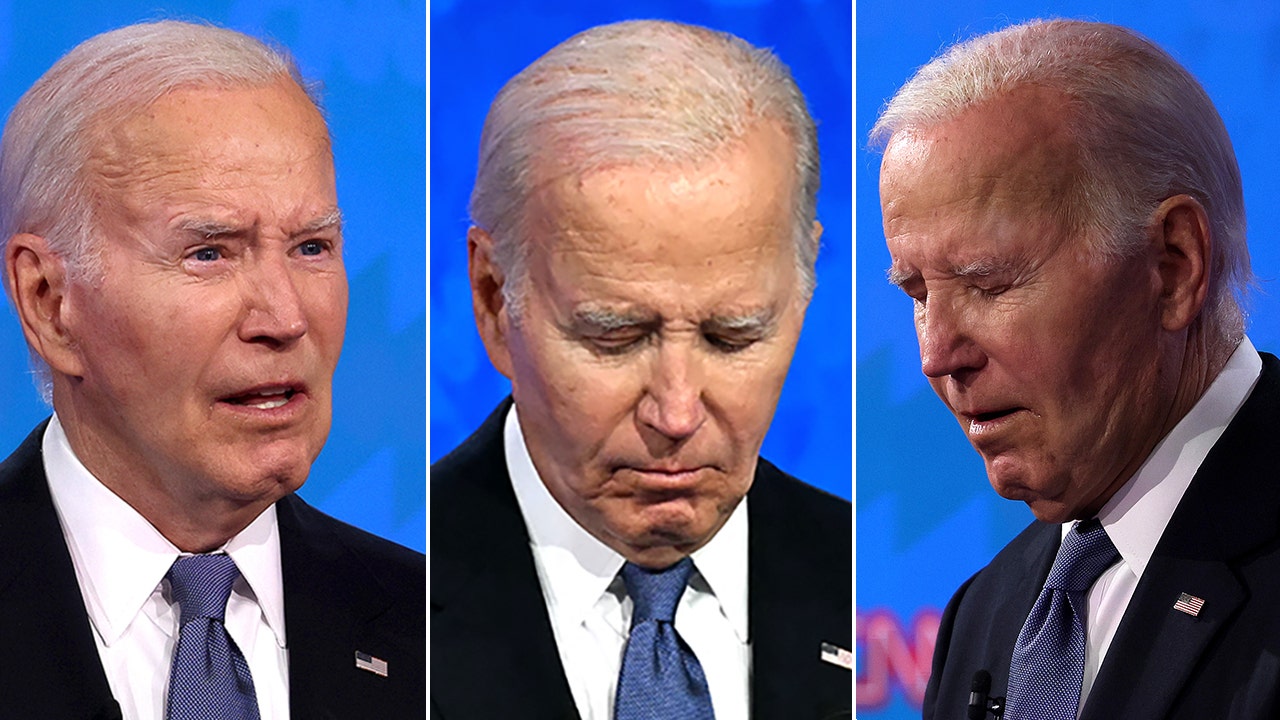
 Politics1 week ago
Politics1 week agoFox News Politics: The Call is Coming from Inside the House
-

 News1 week ago
News1 week agoVideo: J.D. Vance Accepts Vice-Presidential Nomination
-

 World1 week ago
World1 week agoTrump to take RNC stage for first speech since assassination attempt






